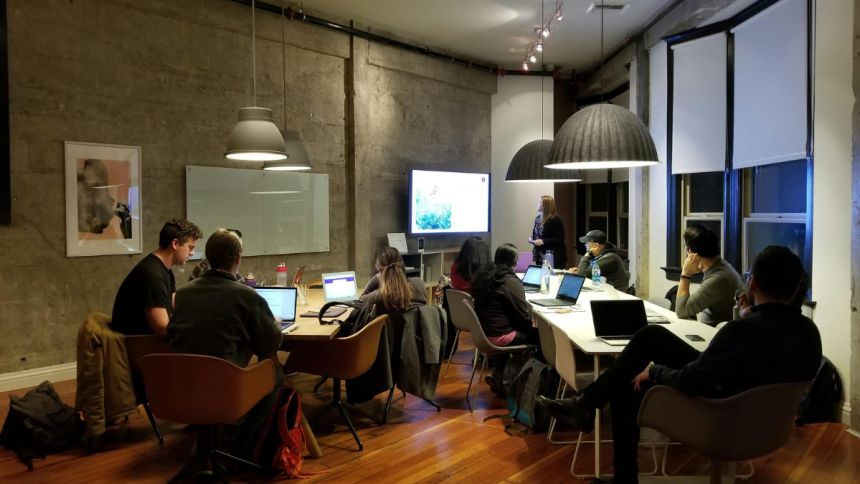Let’s be honest—no one wants to sit through another boring session and forget everything the next day. If you’re running training or webinars, your goal isn’t just to present material. You want people to walk away, remembering what they saw, heard, and did. You want your content to actually make an impact.
Whether you’re teaching professionals, team leaders, or industry experts, creating content that sticks is the name of the game. You don’t need a flashy setup or endless slides—you need smart, practical strategies that truly make it work.
1. Start With a Clear, Purpose-Driven Learning Objective
If you’re not clear on what your audience should walk away with, neither are they. A good session starts with a goal. What do you want them to know or do after it’s over? Defining the outcome early makes it easier to organize your material, keep your message focused, and avoid going off-track. Everything should support that purpose, whether it’s gaining a skill or earning credit. That’s how you set the stage for value that lasts beyond the session.
2. Align Your Content with Credentialing Requirements
People are more likely to stay engaged when the training leads to something useful. Recognition, whether through certification or credit, adds motivation. It also shows that your program meets industry standards. To become authorized to offer continuing education (CE) credits, you must fulfill the requirements established by the accrediting authority relevant to your profession. The question is how to offer continuing education credits. For this, you need to meet compliance standards, structure your material, and get accredited. This step adds weight to your sessions and builds trust with your audience.
3. Make Sessions Interactive, Not Just Informative
If you’re talking all the time, people will lose interest quickly. Add in questions, polls, breakout discussions, or chat prompts. Keep them engaged by letting them respond and participate instead of just watching. Interactive moments give people a reason to pay attention and remember what’s being shared. You don’t need fancy tech—just smart planning and a few well-placed prompts. People are more likely to stay connected and take away something valuable when they are involved.
4. Use Real-World Scenarios That Apply to the Learner’s Role
Real-life examples work better than theory alone. Try showing how a concept would play out in someone’s actual job or day-to-day tasks. Use role-play, simple case studies, or a challenge they might actually face. This helps connect the dots between your material and their work. It sticks better when people can see how a topic applies directly to them. And more importantly, they’ll be able to use it when it counts.
5. Incorporate Microlearning for Bite-Sized Mastery
Nobody wants to sit through a two-hour session just to remember two points. Break your content into small, focused parts. Short segments help people absorb what matters without feeling overwhelmed. Micro sessions are easier to schedule, easier to complete, and easier to revisit later. If your platform supports mobile access or on-demand viewing, even better. Small steps make a big difference in how much people retain—and how likely they are to come back for more.
6. Measure Progress Through Meaningful Assessments
Tests aren’t just about scores—they help reinforce the message. Quick quizzes, short answer questions, or real-world challenges give people a chance to apply what they’ve heard. This also shows whether your material is being understood. The goal isn’t to stress out the participant; it’s to make sure the time they spent with you meant something. Good assessments offer both the trainer and the participant a clearer picture of progress—and where more support might be needed.
7. Offer Certificates and Recognition for Completion
People like to feel that their effort is worth something. A certificate or digital badge shows that they’ve completed something useful. It gives them a sense of achievement and provides proof they can use in their professional life. Adding this extra touch makes your training more rewarding. It also encourages more people to complete your program, especially when the recognition is tied to career development or license renewal.
8. Design With Accessibility and Inclusivity in Mind
If your content isn’t accessible to everyone, you’re missing the mark. Make sure people with different needs can use your platform. Use clear fonts and captions for videos, and make sure your materials work with screen readers. Also, avoid cramming too much on one screen or using confusing navigation. When everyone can participate comfortably, your sessions become more impactful and inclusive. Thoughtful design isn’t just good practice—it’s the right thing to do.
9. Blend On-Demand and Live Elements for Flexibility
Some people want to join live. Others need to learn on their own time. By offering both, you give everyone a chance to succeed. Live sessions are great for discussions and Q&A, while on-demand access lets users review or catch up when needed. This blended approach keeps things flexible, especially for professionals with packed schedules. It also increases attendance and participation because people can choose what works best for them.
10. Keep Content Fresh and Aligned with Industry Trends
Outdated content is a quick way to lose interest. Update your materials regularly so they reflect the latest tools, trends, and regulations in your field. People will stay engaged and take your content more seriously if it feels current and relevant. Staying updated also helps you meet continuing education requirements and gives your training more value in the eyes of your audience.
Creating powerful sessions isn’t about doing more—it’s about doing it right. When your content is focused, interactive, and relevant, people remember it. And when it’s built with real goals in mind, it has lasting impact. Whether you’re leading a workshop, a webinar, or an online course, your success depends on how much people take away and apply later. With these strategies in place, your training won’t just be another event—it’ll be something they remember, use, and appreciate.
Lynn Martelli is an editor at Readability. She received her MFA in Creative Writing from Antioch University and has worked as an editor for over 10 years. Lynn has edited a wide variety of books, including fiction, non-fiction, memoirs, and more. In her free time, Lynn enjoys reading, writing, and spending time with her family and friends.















